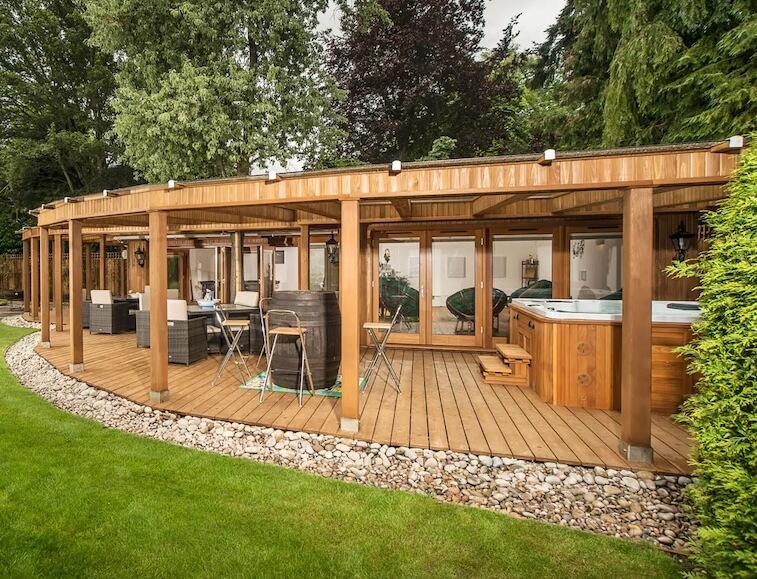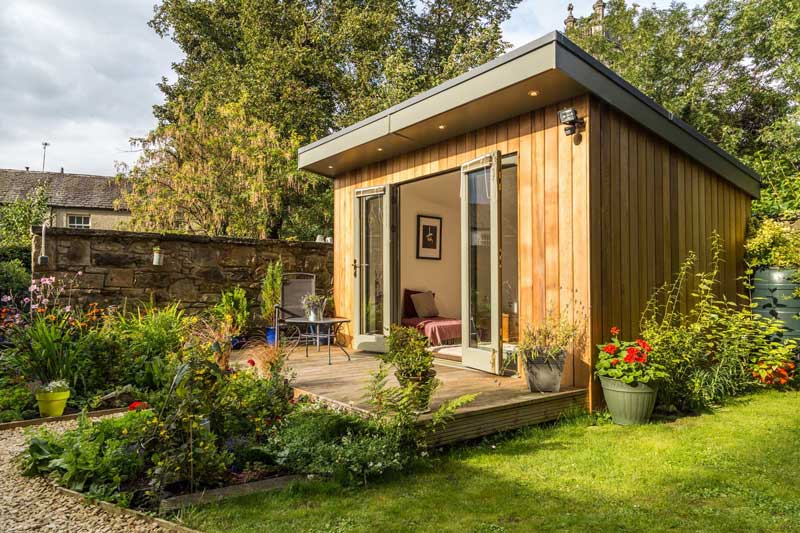New Reasons For Planning Permission For Garden Offices
New Reasons For Planning Permission For Garden Offices
Blog Article
What Planning Permits Are Needed For Gardens, Rooms, Etc. Regarding Changes Of Use?
When constructing garden rooms, conservatories, outhouses, garden offices or extensions, the concept of "change of use" is a crucial factor in determining if permission to plan is required. The planning permission is needed for any changes in usage.
If you intend to convert a non-residential structure (like garages or an agricultural building) to a residence or a garden office the permission to plan is normally required. This is due to a change in the use classification of the building.
Garden Rooms: Living Space
The use of a room within the garden as an individual living space (e.g. guest house or rental unit) is considered to be a change in the usage. The structure must be inspected by the authority responsible for planning in order to comply with residential standards.
Business Use:
If you plan to use your garden room or conservatory for business purposes (e.g., as an office for the home-based business with frequent guests or employees) Planning permission may be required. This is due the possible impact on the neighboring area which includes noise, parking, and traffic.
Community or educational use
Planning permission is also needed to transform an existing garden structure into a space for education or community (such as a conference room or a classroom). Local authorities will assess whether the property is suitable for use and the impact it could have on the area.
Impact on Local Infrastructure:
Any change of use that significantly impacts infrastructure in the local area (e.g., roads, drainage systems, or public services) usually requires planning permission. Local planning authorities will review these impacts as part of the application process.
Dual Use
For properties with mixed uses (e.g., residential and commercial), a permit for planning is typically required to clearly define the different uses.
An increase in footfall, traffic, and revenue:
Planning permission might be needed depending on whether the new use will likely increase traffic or footfall (e.g. changing an unimportant garden space into retail space). This is to minimize any potential negative adverse impact on the neighborhood.
Building Regulations In compliance:
While not a matter of planning permission, any alteration in the use of a space must be governed by the building regulations to ensure security as well as health and energy efficiency standards. This is especially true when the space is converted to a habitable one.
Environmental Impact:
Modifications to the use of land that negatively impact the environment, for example the conversion of agricultural land to residential uses, require planning permission. Environmental assessments could be required in the process of submitting an application.
Community and Amenity Impact:
A crucial aspect to consider is how the changes will affect amenities for the community as well as the character of the neighborhood. If you want to turn a garden room in an eatery, for instance you must obtain planning permission. This will make sure that the plan is in line with the local plans for community development and preserves local amenities.
Areas that are not allowed to be used:
In areas that are designated as conservation areas, National Parks (AONB), or Areas of Outstanding Natural Beauty modifications in the use of the area are subject to more stringent controls, to preserve the character of the area. In these cases it is necessary to obtain planning permission.
Local Planning Policy:
Local planning authorities usually have strict policies regarding changes in usage. These policies can be very different. It is important to read these policies to understand the requirements for changes and the criteria that must be met.
In summary, planning permission is typically required for any significant alteration in the usage of a garden room conservatory or outhouse, garden office, or extension. It guarantees that the new use will be appropriate for the location, in line with national and local policies, and address any possible impact on the surrounding environment or the community. Consulting with your local planning authority early in the planning process is vital to establish the precise requirements and to obtain the necessary approvals. Follow the most popular best heater for garden room for blog recommendations including costco garden buildings, garden rooms in St Albans, costco garden rooms, Tring garden rooms, what size garden room without planning permission, outhouse builders, what size garden room without planning permission, garden rooms in St Albans, my outhouse, garden room or extension and more.
What Is The Environmental Impact Of The Garden Rooms, Etc.?
It is crucial to think about the impacts on the environment when building garden rooms or conservatories. Be aware of the following environmental considerations:
Planning permission will be needed if a proposed structure affects local wildlife habitats (such as hedgerows, trees or ponds). In order to reduce and assess the impact, an eco-survey may be required.
Protected species and habitats
Permission is needed when there are protected species on the site (e.g. bats or newts) or if they are located in protected habitats or nearby (e.g. Sites of Special Scientific Interest SSSI). The site must be protected through specific methods.
Tree Preservation Orders
If the proposed construction involves the removal or modification of trees covered by TPOs then planning permission is necessary. Local authorities will assess the impact of the proposed structure and may recommend replacement trees or other mitigation measures.
Flood Risk and Water Management
For development in flood-prone zones or near water bodies, permits for planning are required. It is possible to perform a flood risk assessment to ensure that the structure isn't prone for flooding and has drainage solutions.
Sustainable Construction Practices
It may be necessary to obtain planning approval for sustainable construction methods and materials. This includes considerations for energy efficiency, insulation as well as the carbon footprint of the building materials.
Surface Runoff and Drainage
A key consideration to consider for the environmental is how the new structure will affect the drainage system and the runoff of surface water. Planning permission is needed to ensure proper drainage systems to avoid flooding and waterlogging.
Stability of the soil and stability of the land
Planning permission will be required if construction is likely to affect soil stability or soil quality. Planning permission is required when the construction is likely to alter soil quality or stability of the land.
Air Quality:
For any development that might have an impact on the quality of air in the local area (such in the vicinity of major roads or industrial areas) Planning permission will be required. This will ensure that the pollution levels are within acceptable limits and that mitigation strategies are implemented.
Noise Pollution:
If the use that is planned for the extension or garden room will likely to cause significant noise (e.g. or a workshop or music studio) the planning approval is required. The local authority must assess noise levels and potential impacts on the surrounding environment and neighbors.
Waste Management:
Proper waste management during and following construction is vital. Planning permission is needed to ensure that adequate arrangements are made for waste disposal and recycle while minimizing environmental impact.
Energy Efficiency
The planning permit could include the need for energy efficiency, like solar panels, high-performance glazing, or any other green technology. This reduces the environmental footprint of the building.
Environmental Regulations
Environmental laws and regulations are applicable to all developments which includes the UK Environmental Protection Act. The planning permission is required to make sure that all legal requirements have been met, and that the development will be sustainable in the environmental sense.
Summary: Planning permissions for conservatories, garden rooms or outhouses as well garden extensions and offices should be based on a wide range of environmental effects. A prompt consultation with your local authority is vital to understand the responsibilities of the proposed development and to ensure that the development is in compliance with all applicable regulations and environmentally sustainable. Follow the recommended outgouse for blog advice including outhouse buildings, out house for garden, composite garden office, garden room vs extension, luxury outhouse, costco garden buildings, gym outhouse, costco outbuildings, costco outhouse, Tring garden rooms and more.
What Planning Permits Are Needed For Gardens, Rooms, Etc. In Terms Of Appearance And Design?
If you're planning to construct a gardens, conservatories outhouses, office or extension the design and appearance will be the primary factor when determining whether or not you require planning permission. Here are key considerations.
Planning permission may not even be needed if the structure proposed falls within your permitted development rights. There are certain aesthetic and design requirements that must be met.
Size and scale:
The size and scale of the new structure should be in proportion to the property's existing size and buildings around it. Structures that exceed the size limits set out in permitted development rights require approval for planning.
Massing and height
The dimensions of existing structures and properties adjacent to them should be apparent in the height and massing. Planning permission is typically required for structures that exceed height limits or that are out of proportion to the surrounding buildings.
Materials and finishes
The materials used and the finishing should match the current building and structures. Planning permission might be required if proposed materials do not fit with the local culture and style.
Design Harmony
The design must be in harmony with the style of the existing structures as well as the property surrounding it. The style of the structure to be constructed must be harmonious with local characteristics and appearance.
Roof Design
The design of the roof should be in harmony with the architectural style and look of the structure or property. Planning permission could be required if the roof design is not in line with the local style and style.
Fenestration (Windows and Doors):
The style and location of doors and windows must be harmonious with the property's existing and nearby structures. The proposed fenestration could require planning approval if it's not compatible with the local character and style.
Treatment for Facades
The facade treatment must be in harmony with the existing buildings and properties. If the proposed style of the facade is not compatible with the local style and character, planning permission might be required.
Landscape and the Surroundings
The landscaping around the new structure should be in harmony with the existing building and property. The proposed landscaping could require approval from the planning department in the event that it is not compatible with the local character or appearance.
Visual Impact
Visual impact on the surroundings of the proposed building must be kept to a minimum. A planning permit might be required for a structure which has a negative impact on the area around it.
Heritage and Conservation Areas
If the property is in the conservation or heritage zone it could be subject to stricter standards for design and appearance. If a building that is being constructed is not in compliance with these requirements, planning permission might be needed.
Architectural and Planning Guidelines:
Local planning agencies typically have strict guidelines on design and appearance. Planning permission could be required if the proposed building does not conform to these guidelines.
Planning permission is often based on the design and appearance of the building. This includes conservatories, garden rooms or outhouses. In the beginning of the planning phase, it is important to consult the local authority to ensure that the design is in line with the local guidelines for character and appearance. This will also determine whether planning approval is needed. See the top rated do garden rooms add value for site examples including garden room or extension, composite garden office, outhouse garden, outhouse building, garden room or extension, conservatories and garden rooms, how to get power to a garden room, garden outhouses, conservatories and garden rooms, out house and more.